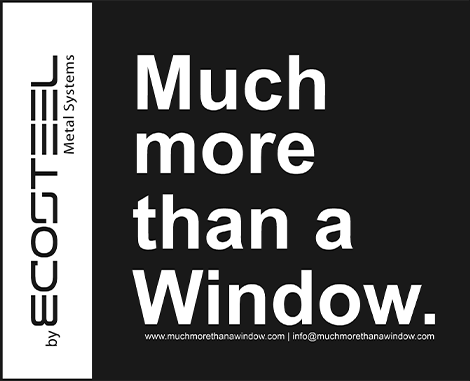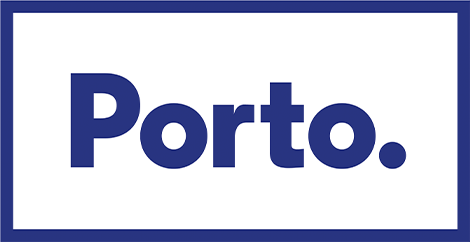
Warhol, People and Things
Warhol, People and Things is an extensive exhibition focusing on Andy Warhol and his influence across several generations of photographers, filmmakers, musicians and multi-media artists. Including works by Warhol, contributions by his close friends, and commissions and interventions by contemporary artists from New York, Porto, and Lisbon, this project resulted from collaboration between the Mishkin Gallery, Baruch College of the City University of New York (CUNY) and Casa São Roque, Porto.
The exhibition presents the importance of Andy Warhol’s contribution to critical art discourse and the development of media art. It also examines how his methods and gestures inspired a re-envisioning of the object and the subject, redefining the relation between people and things and expanding our knowledge of social life.
Pop Art and the productivity of Warhol’s collectively run Factory transformed the entire iconosphere of high consumerism, offering a mirror to capitalist society in which image production and appropriation, commodity and icon fetishism were put into a new self-reflective dynamic. While quiet and shy, Warhol encouraged everybody to make art—saying “everybody can be an artist”. The result was his creation of a controversial large-scale “social sculpture” that embraced enormously wide groups of collaborators, actors, sitters, and co-authors—from famous celebrities and elites to those of the working and marginalized classes, representing minorities and the queer underground. Warhol is well-known for moving between media throughout his career, but his Polaroids, photographs and films remain in the shadow of his widely recognizable and iconic multiples and silkscreens. He first tested the medium of Polaroid instant photography in the 1950s, the earliest preserved print of which (1958) portrays his collaborator, the publicly famous photographer Edward Wallowitch. Warhol, as was common, used mostly the Polaroid Land Camera and Polaroid Big Shot, but it wasn’t until the 1970s that he adopted this technique in earnest to produce colourful, original images of his portrait subjects, moving beyond the newspaper cut-outs he had employed in his earlier works. The majority of his Polaroids were subsequently used in large-scale, silkscreened canvases. Although the silkscreen process is designed for multiple reproductions, each Polaroid he used is still a unique print, evidence of an “instant performance”: an encounter between the sitter and photographer.
The core of Casa São Roque’s exhibition is a selection of 38 colourful Polaroids from 1972–1986 and 40 black and white gelatine silver prints from 1980–1986 by Warhol from the collection of the Mishkin Gallery at Baruch College, City University of New York (CUNY), originally gifted by the Andy Warhol Foundation for the Visual Arts to expand scholarship on the artist’s work. This show marks their first presentation in Portugal and their first time traveling to Europe. It is also Warhol’s second showing in Porto since the Andy Warhol: A Factory travelling retrospective held at the Serralves Museum in 2000.
Interestingly, a previous exhibition, On the Banal, On the Comic and the Tragic, curated by Miguel von Hafe Pérez for the Fundação Cupertino de Miranda in Vila Nova de Famalicão in 1988, included a wide selection of Warhol’s Polaroids, such as his Self-Portraits in Drag from the 1980s and his Exposures Portfolio from the 1970s. The Baruch College / CUNY collection of Polaroids presented here includes anonymous people and objects: adults, children, shoes, and keys, alongside known celebrities: singer Dolly Parton, actor Sylvester Stallone, Maria Cooper Janis (an artist and producer, daughter of Gary Cooper), Sean Lennon (musician, son of John Lennon and Yoko Ono), and Iranian Princess Ashraf Pahlavi. There is also a group of four Polaroids of Bracka Weintraub (Bronka Rabin) in pronounced white make-up, an interesting figure of Jewish-Polish origins and the wife of Jacob D. Weintraub, a gallerist dealing modern art and author of Jacob’s Ladder: From the Bottom of the Warsaw Ghetto to the Top of New York’s Art World. They were both later portrayed by Warhol in big silkscreen paintings. Also included is the portrait Lurdes from 1974, part of Warhol’s important series on the gender duality embodied by drag queens, Ladies and Gentlemen. The intimate and less known black and white gelatin silver prints include Blondie Concert Backstage (1982), city landscapes, still lifes, male nudes and body builders, Sylvester Stallone with an unknown woman, friends of Warhol such as Margaux Hemingway with a birthday cake, Pia Miller captured in a reception, several depictions of his partner Jon Gould, photographer Christopher Makos, and vital Factory workers Fred Hughes and Sam Bolton.
Warhol, People and Things also includes Warhol’s masterpiece experimental films: Kiss (1963–1964), depicting for 58 minutes various couples kissing, and the double-channel movie The Chelsea Girls (1966), recorded at the Chelsea Hotel and the Factory and featuring Nico, Ondine, Gerard Malanga, Mary Woronov, Marie Menken, Mario Montez, Ingrid Superstar, and others with music by The Velvet Underground. Edited from 12 reels (both color and black and white), the film is paired together in two parallel screens showing different actions in each, producing a unique theatrical and hypnotic 204 minutes in acts. Also on view is episode 9 of Andy Warhol TV Productions from 1983. It features Jean-Michel Basquiat and Andy Warhol as an example of their intergenerational collaborations.
Warhol’s films remain in direct dialogue with the New York underground cinema that developed in the 1960s, including filmmakers such as Jonas Mekas, Stan Brakhage, and Paul Morrisey. Warhol was an attendant of the Film-Makers’ Cooperative at Mekas’s loft and witnessed the formation of Anthology Film Archives. Mekas borrowed his camera several times, and set the frame for Warhol’s Empire, which he realized together with John Palmer and Marie Menken, who was teaching Warhol how to use the 16mm Bolex handheld camera. In turn, Warhol himself was the subject of Jonas Mekas’s personal film diary from 1965–1982, which led to the creation of Mekas’s Anthropological Sketches: Scenes from the Life of Andy Warhol: Friendships & Intersections (edited in 1990 and presented at Casa São Roque in this version). Depicted in a poetic style with a dynamic, shaking camera, the film captures private meetings and events accompanied by music from a 1966 performance by The Velvet Underground, as well as Warhol’s exhibition at the Whitney Museum in 1971, George Maciunas’s dumpling party-performance with John Lennon, Yoko Ono and others participating, Warhol at his studio taking Polaroid portraits of Evelyn Kuhn in 1976, vegetable and fruit shopping at Union Square market, spending vacations in Montauk with Lee Radziwill and her family, and the Atlantic ocean waves accompanied by an authentic sound recording of the 1987 memorial mass for Warhol in St. Patrick’s Cathedral.
Jeff Preiss, a successor of the underground cinema and structural film legacy, is specialized in the hypnotic editing and portrayal of people. His work is well-informed by the diaristic method of Mekas and poetical usage of the Bolex camera. For Casa São Roque’s exhibition, Preiss contributes three works developed from analog records and transferred to digital files. His most recent travel film, Welcome to Jordan (2022), was edited from the home movie made during his visit in Wadi Rum and subsequently separated into distinct colour channels, appearing like superimposed layers or moving silkscreens. 14 STANDARD 8mm REELS 1981–1988 (2018) reassembles his 1980’s works, which were recently preserved by Anthology Film Archives and The Andy Warhol Foundation for the Visual Arts. Each reel is dedicated to one person, such as Zeena Parkins, Peter Hutton, Saul Levine, Chet Baker, and Rebecca Quaytman. STOP (2012) is a feature-length chronicle shot between 1995 and 2011. Organized sequentially, it also operates around the conventions of home movies: subjects repeat in cycles while others form isolated episodes, e.g., London during Princess Diana’s funeral, the three-year program of the New York artist-run gallery Orchard, the events of September 11 and the shocked atmosphere of New York City afterward. As in the classic home movie tradition, the central subject of STOP is Jeff Preiss’s child’s early years from a toddler to a teenager, who in the end of the film declares the right to gender self-determination.
For nearly thirty years John Miller has chosen to photograph images between noon and 2 pm, in the middle of the workday. The Middle of the Day series began in 1994 and is an ongoing documentary project that reflects a tension between the camera as an apparatus and the unfolding of everyday life. Miller first used an analog camera, later turning to digital, and for three years he has used the mobile phone camera. Ironically, his project might be viewed as an attempt to retrieve the middle of the day for total (aesthetic) production. What Miller is interested in, then, “is documenting something intangible, something invisible and something that might only attach itself to an image after it has been placed in a system: the problem of valuation”. The installation prepared for Casa São Roque consists of slideshows spanning 2019–2022 captured in several cities, including New York, Berlin, Palma, Paris, Copenhagen, Susch, and Łódź. As homage to Warhol, Miller titled his first publication of this series after a quote from The Andy Warhol Diaries: “It was a nice day, in the seventies. I watched people on pogo sticks in the park”.
Tony Cokes, an expert in pop music and its effects in history and society, presents a film essay Untitled (m.j.: the symptom) (2020), in which he proposes different protocols for reading a text. Featuring musical tracks with stuttered or fragmented vocals and beats, the film follows the complicated legacy of Michael Jackson, who for years reappeared throughout Cokes’s work. Like Warhol, Jackson often performed his identity: straight/queer or white/black as subjected to societal and industry demands. Jackson was also portrayed by Warhol for the 1984 cover of Time magazine, shortly after the performer’s hit Thriller was released. The film essay is a recent example of Cokes’s typical filmic language, in which he removes the image (leaving only text and colour), a result of an ongoing process towards image reduction that began in 1999 with his series Pop Manifestos.
Anna Ostoya’s contribution to the exhibition is Memorabilia (2021/∞), an ongoing series of photomontages derived from images found on the Internet. It is an associative diary in which Ostoya pairs images which look alike but belong to different contexts or oppositional worldviews, generating a deja vu effect. Explosions (2022) contains an image of burning twin towers in Sarajevo and an image of New York’s twin towers in flame. Coalitions and Members brings together two historical photographs from 1969 – one showing the members of an antiracist and anti-class civil rights movement in Chicago and the other depicting Andy Warhol with participants of the Factory in New York. Some are based on visual parallels between renowned artworks and news images, such as Eye, in which a shot of a cut eye from Un Chien Andalou (1929) is paired with a recent image from Afghanistan of a man’s eye being scanned with a biometric device. In another, an exam chair at an Illinois Planned Parenthood office is paired with Little Electric Chair by Andy Warhol from 1964–1965. The strategy of visual similarities set within contextual juxtapositions is Ostoya’s “pseudomorphic” method, allowing her to question the meaning and value of the images as well as their geographical and temporal relevance.
Instead of portraying people, Eileen Quinlan captures toys of her children in her homemade Polaroids, composing within a private domestic context. These are artworks produced within the interstitial moments of motherhood, resulting from constantly evolving playtime with her kids and commenting on a process of seriality, chance, and the artistic potentiality of the mass-produced popular toy Magna-Tiles. 24 Polaroids are formed and framed in groups, including First Things First and Gravity Fails (2022), which follow her previous series titled Play Time. They reveal technical imperfections and the smashed errors of the Polaroid’s impermanent prints, emphasizing the inherent abstraction that results from the errors of the instant printing chemical process. They look like tests, tiny prototypes for unknown bigger productions that could be rendered without errors.
Pedro Magalhães, known for his analog and digital photographic archives documenting different decades and gentrification in Porto (ongoing from 2008) – among them the Porto nightlife scene – contributes his site-specific installation I Don’t Speak Guitar (2022). Taking its title ironically from a Patti Smith interview quote reflecting on her music and usage of guitar as a communicative object, Magalhães’s work is spread over all floors of Casa São Roque, consisting of music, noise, performance, video, objects, Polaroids and fanzine collages, making a tribute to both The Velvet Underground, Warhol, and the New York avant-garde of the time. Interestingly, while being a young engineer and student in the Department of Mechanical Engineering at the University of Porto, Magalhães worked at the Serralves Museum and was a member of the installation and technician team for the Andy Warhol: A Factory exhibition in 2000. Since that time, he has developed multi-media work based on his deep knowledge of Warhol’s influence on experimental music and film, pop culture and pop music. Magalhães contributed invaluable advice and guidance to Warhol, People and Things.
The youngest participant of Warhol, People and Things, Sara Graça, has for some time played with the rules of the art market, and elements of high and low culture in modes of production of art, mass and domestic commodities, taking inspiration from materialist Pop Art and the Warholian strategies developed in Double Lives in Art and Pop Music by Jörg Heiser. Graça’s contribution intervenes throughout the interior of the exhibition, using multiples titled Pratos de Papel (Paper Plates), an installation called 50/50 consisting of self-made magnets clipped on the fridge, and cardboard sculptures that continue her No Inferno às 9 (In Hell at 9) series. They represent characters that are left wandering after leaving the club, figures who might be searching for the after-party. Her golden paper plates and traces “are like cheap angels spread around the house”. They want to look glamorous, as glamorous as the mansion. On closer look, ones see their distorted faces re-assembled, and realize they are just cheap mass productions, maybe leftovers from the party the night before. Graça asks: “who is serving us tonight?”.
The exhibition also features important photographs from the Casa São Roque collection, including Augusto Alves da Silva’s Ferrari series depicting various fetishistic aspects of a red car commodity (1999) and Ken Moody (1984) by Robert Mapplethorpe, one of his typically intimate, black male nude portraits with a white flower.
Public programs will include a lecture by Portuguese photography scholar Susana Lourenço Marques (Faculdade de Belas-Artes da Universidade do Porto) and a lecture by Lithuanian art historian Inesa Brasiske on the relationship between Andy Warhol and Jonas Mekas.
Curated by Alaina Claire Feldman and Barbara Piwowarska
Exhibition: 22 May 2022 – 31 January 2023




















